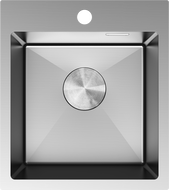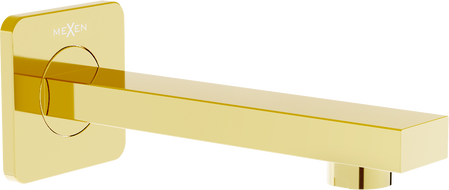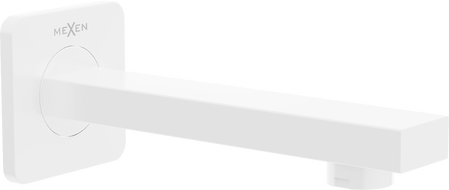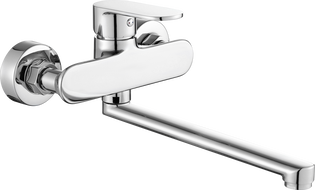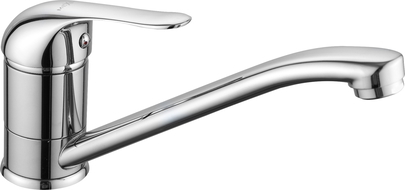
Sanitary hardware stores are rich in designs, colors, and shapes of kitchen faucets. More and more frequently, we encounter products made from various materials and in different styles. Futuristic-shaped faucet models catch the eye, equipped with accessories that facilitate work in the kitchen. The choice of faucet should be thoughtful, especially when arranging a room with a kitchen island or installing a sink in an unusual location. What kind of faucet should you choose? How to match the shape of the faucet to our needs and the sink we have?
The shape and size of the faucet in the kitchen faucet matter
The parameters to pay attention to include mainly the height and shape as well as the length of the faucet, as these are the factors that determine the comfort of using the kitchen faucet. It is important that it has a large reach, which will allow for comfortable work in both compartments of the sink. The height of the faucet is also significant. It should be adjusted to the size of the sink. A faucet that is too low will hinder washing large dishes or filling high buckets or bottles with water. A high faucet allows for greater freedom of movement in the washing area but may cause water to splash. A faucet that is too short will not direct water into the center of the compartment, which may cause discomfort when washing dishes or contribute to flooding the kitchen counter.
What shape can a kitchen faucet have?
The faucet can take the shape of the letters L, C, S, U, and F. The most popular ones in their class are those shaped like L and F, as they fit standard sinks with a compartment depth of 12 - 14 cm. Lower faucets, type S or C, work well with compartments deeper than 14 cm. It is worth following the rule that for deep and wider sinks, rather flat faucets should be chosen, while for smaller, shallow ones, curved ones. This will allow for precise directing of the water stream into the center of the sink and prevent flooding the kitchen counter.
Flexible faucets (resembling a reverse J shape) are extremely fashionable, as they have the ability to “remember” the set position. Flat faucets are also available on the market, emitting a wide water stream. However, these products, due to their often short length, are more commonly used in bathtubs or sinks.
Kitchen faucets - what else to pay attention to when buying?
The shape and reach of the chosen faucet must also consider the size and structure of the sink, the depth of the compartments, and the location of the faucet concerning the window or hanging kitchen cabinets. It is also important that the faucet is easy to keep clean. Naturally, when choosing a faucet, we prioritize ergonomics and functionality, but increasingly, aesthetic aspects are also significant.
Therefore, let's also think about the appropriate color of the faucet to match it to the color scheme and style of the room. This is not difficult, as manufacturers offer various colors of faucets. Skillful combinations of all aspects will make the kitchen a stunning room and ensure comfortable use.
Criteria for choosing kitchen faucets based on installation method
An essential criterion for choosing a faucet for any kitchen is the method of installation. We can distinguish between wall-mounted and freestanding kitchen faucets:
- wall-mounted faucets - screwed to hot and cold water connections coming directly from the wall. The popularity of this solution is decreasing. The offer is mainly aimed at customers who are replacing an existing faucet with a new one without remodeling the plumbing. To replace a wall-mounted faucet with a freestanding model, modernization of the approach is necessary, which is already associated with significant kitchen renovations.
- freestanding faucets - these are more modern models mounted in the countertop hole or the edges of the sink. Hot and cold water is supplied through flexible connections connected to the faucet. Replacing this type of faucet with another model does not pose major problems, as its size and diameter of the prepared holes are standardized.
Additional convenient features of faucets
The sink faucet must be practical. The functionality of the faucet is most often determined by the faucet equipped with features that facilitate the use of the tap. An example may be a faucet with a pull-out spout, which allows directing the stream of water to any place. A pull-out spout also allows for filling dishes outside the sink compartment. A practical element that helps save water is the aerator. It is a small sieve located at the end of the faucet. The water stream passing through the aerator gets aerated, thus reducing the flow and saving water.
Great comfort and the saving of energy and water are provided by thermostat faucets. Thanks to special knobs, the intensity and temperature of the water can be set. The latest ones are equipped with original displays showing the water temperature. Currently, there are also touchless faucets available on the market, which activate when an object, such as a hand, is nearby. They are very economical. However, this type of faucet is rarely used over sinks; it is more frequently applied in bathrooms, especially in public utility facilities.







